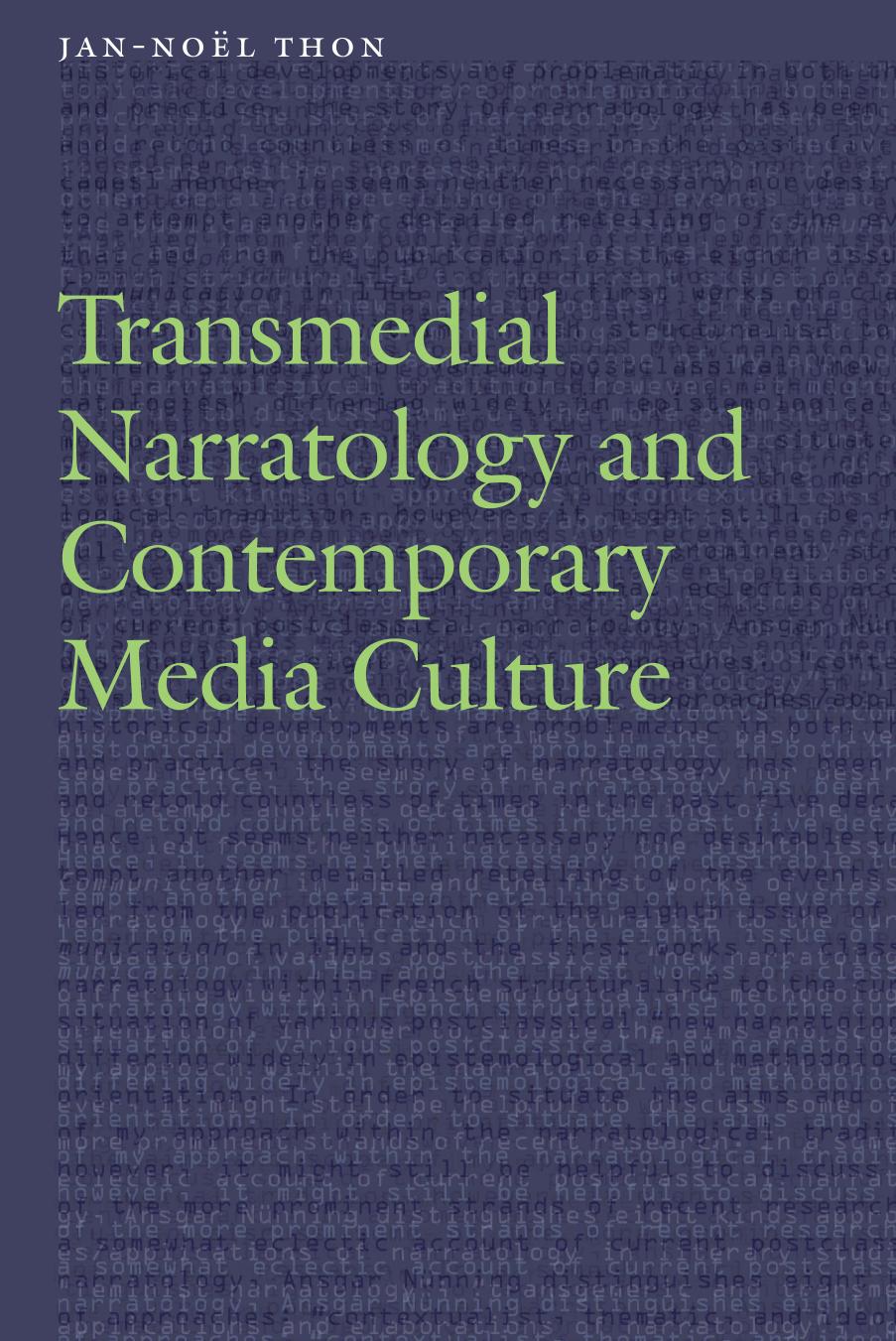Transmedial Narratology and Contemporary Media Culture by Jan-Noël Thon

Author:Jan-Noël Thon [Thon, Jan-Noël]
Language: eng
Format: epub, pdf
Tags: American, General, Language Arts & Disciplines, Semiotics & Theory, rhetoric, social science, LIT004020 Literary Criticism / American / General, Media Studies, SOC052000 Social Science / Media Studies, Literary Criticism
ISBN: 9780803288379
Google: kwlpDAAAQBAJ
Publisher: U of Nebraska Press
Published: 2016-06-15T20:27:08.239558+00:00
Fig. 45. Tyler Durden talking to the unnamed experiencing I in Fight Club
Fig. 46. The unnamed experiencing I talking to himself in Fight Club
Fig. 47. Tyler Durden dragging the experiencing I around in Fight Club
Fig. 48. The experiencing I dragging himself around in Fight Club
Before examining a film whose structure of subjectivity relies more heavily on narratorial representation, I would like to offer a brief analysis of a third example, Ron Howardâs A Beautiful Mind, in order to illustrate how (quasi-)perceptual overlay can be used to represent the highly subjective worldview of a paranoid schizophrenic without any additional framing by some form of narratorial representationâand also how strongly Fight Clubâs (eventual) success10 has contributed to moving the initially intransparent use of (quasi-)perceptual overlay into the mainstream. The core âtwistâ of A Beautiful Mind is achieved via the intransparent use of (quasi-)perceptual overlay, but the film actually employs a broader variety ofâfor the most part highly conventionalizedânonnarratorial strategies of subjective representation than Fight Club,11 including (quasi-)perceptual overlay and the nonnarratorial representation of internal worlds as well as spatial point-of-view sequences and (quasi-)perceptual point-of-view sequences. Indeed, during the opening sequence that represents a welcome address at Princeton, the film uses a still comparatively intersubjective spatial point-of-view sequence to establish the relation between John Nash and his friend/rival Martin Hansen. In the sequence immediately following the opening sequence, however, the use of point-of-view sequences becomes more subjective, when a brief spatial point-of-view sequence of John looking at a colleagueâs unusual tie pattern is followed by an only slightly longer (quasi-)perceptual point-of-view sequence in which the pictorial representation simulates how John perceives that tie in a rather unusual way, as he compares its geometric pattern to that of rays of light and slices of lemon (see figure 49 and figure 50).
While this striking visualization of Johnâs mathematical prowess is alluded to repeatedly during the remainder of the film,12 the latterâs structure of subjectivity is still defined by the intransparent use of (quasi-)perceptual overlay that first occurs in the sequence immediately following the two sequences already discussed,13 when Johnâs imaginary roommate Charles Herman is introduced. When John subsequently begins imagining himself as working for the pentagon as a code breaker (though in fact he is stuck in a boring office job), Charles is joined by William Parcher, who functions as Johnâs âcontactâ in the increasingly sophisticated cold war scenario in which he imagines himself as participating, eventually taking over part of the role of Charles in functioning as an easily recognizable symptom of Johnâs paranoid schizophrenia, and Charlesâs niece Marcee, who ultimately leads John to realize his mental condition (or at least acts as a catalyzer for that realization). Prima facie, the intransparent use of (quasi-)perceptual overlay may make A Beautiful Mind appear strikingly similar to Fight Club: the imagined friend(s)/foe(s) (Tyler Durden and Charles/Marcee/William, respectively), the female âlove interestâ suffering from the male protagonistâs mental condition (Marla Singer and Johnâs wife Alicia, respectively), and the key sequence in which the spectator comes to realize the existence of that very condition and the nonexistence of the imagined friend(s)/foe(s).
Download
Transmedial Narratology and Contemporary Media Culture by Jan-Noël Thon.pdf
This site does not store any files on its server. We only index and link to content provided by other sites. Please contact the content providers to delete copyright contents if any and email us, we'll remove relevant links or contents immediately.
Aircraft Design of WWII: A Sketchbook by Lockheed Aircraft Corporation(31769)
The Great Music City by Andrea Baker(21264)
Call Me by Your Name by André Aciman(18961)
The Art of Boudoir Photography: How to Create Stunning Photographs of Women by Christa Meola(17837)
Shoot Sexy by Ryan Armbrust(17139)
Plagued by Fire by Paul Hendrickson(16635)
The Secret History by Donna Tartt(16619)
Portrait Mastery in Black & White: Learn the Signature Style of a Legendary Photographer by Tim Kelly(16483)
Adobe Camera Raw For Digital Photographers Only by Rob Sheppard(16383)
Photographically Speaking: A Deeper Look at Creating Stronger Images (Eva Spring's Library) by David duChemin(16159)
Bombshells: Glamour Girls of a Lifetime by Sullivan Steve(13107)
Pimp by Iceberg Slim(12929)
Ready Player One by Cline Ernest(12836)
The Goal (Off-Campus #4) by Elle Kennedy(12429)
Art Nude Photography Explained: How to Photograph and Understand Great Art Nude Images by Simon Walden(12346)
Kathy Andrews Collection by Kathy Andrews(10517)
Thirteen Reasons Why by Jay Asher(7786)
Wonder by R.J. Palacio(7729)
Goodbye, Things by Fumio Sasaki(7725)
